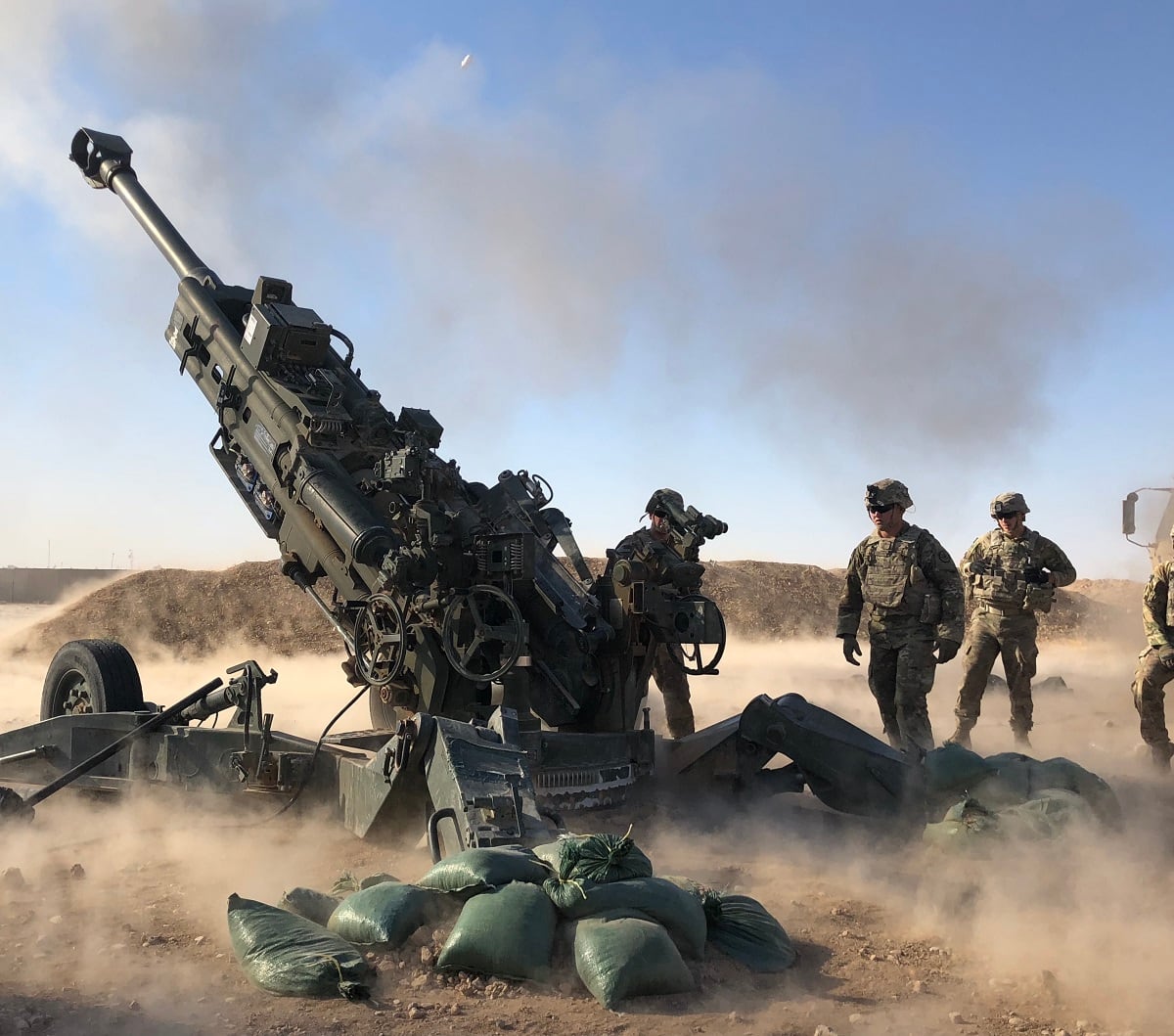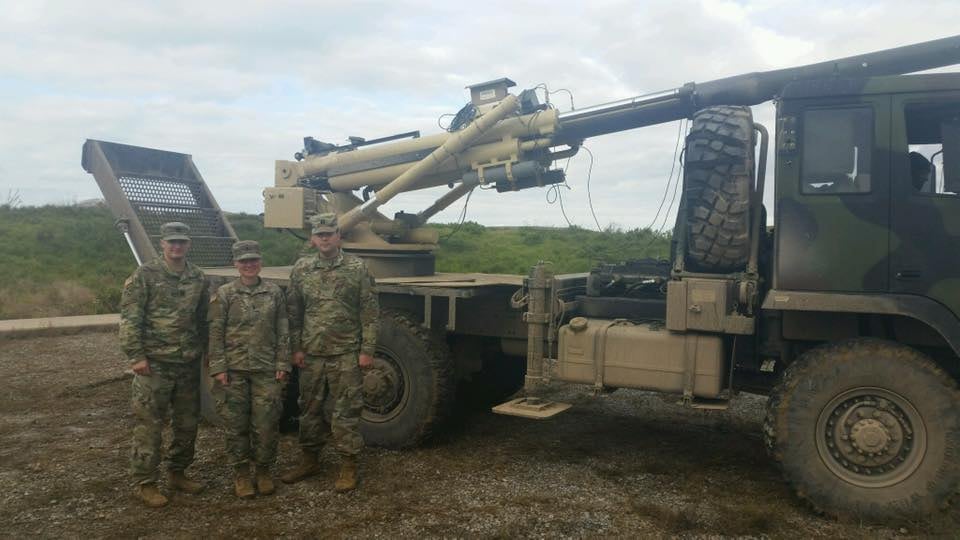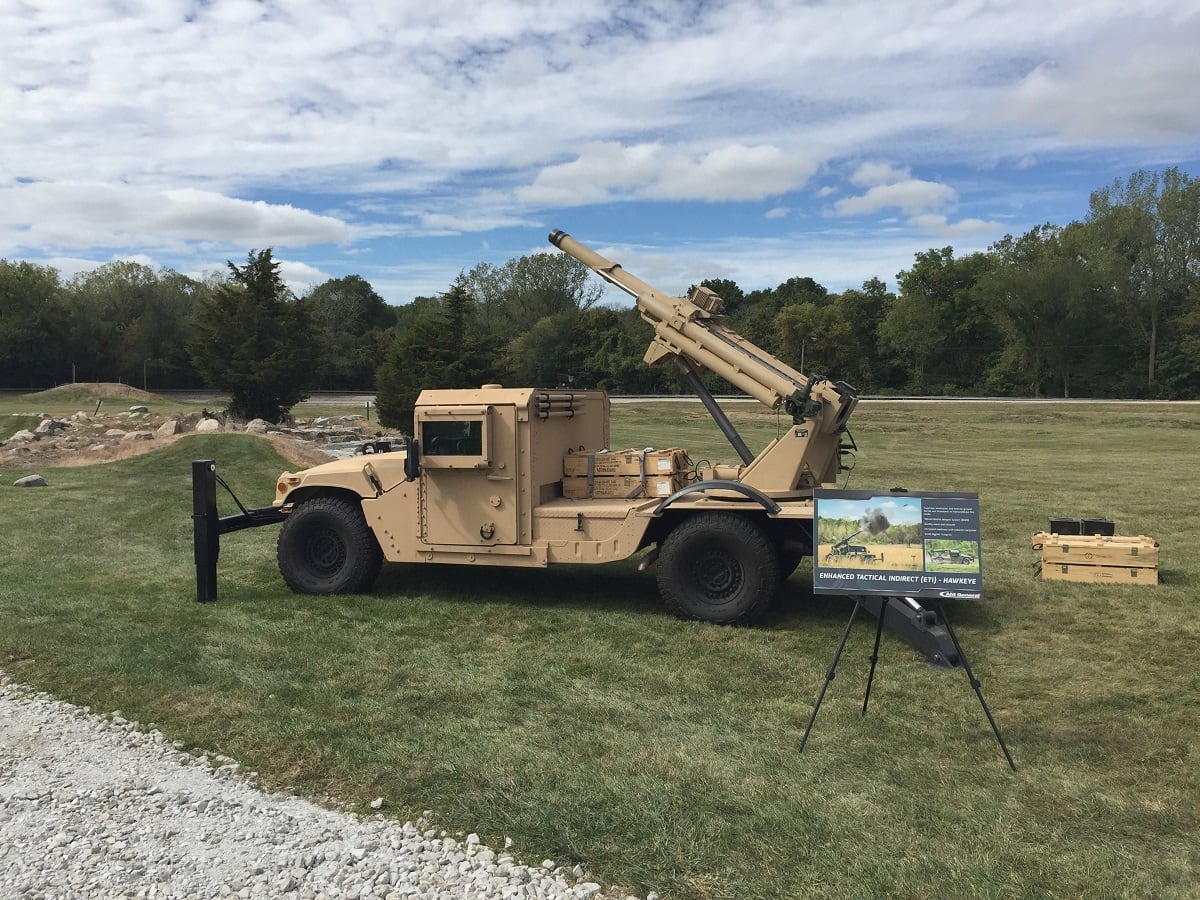Recent Army artillery testing could give the fires community its first-ever ability to airlift self-propelled artillery in both small and large packages.
One piece of gear has been tested before and showcased in recent years, but another comes as a bit of an Internet surprise after soldiers posted photos to social media websites.
The Hawkeye is a 105mm, Humvee-mounted artillery piece that’s made by AM General and Mandus Group. AM General makes Humvees, while the Mandus Group makes the a soft-recoil howitzer, which allows the cannon to fire from a lighter platform.
RELATED

That same technology has been applied to the “Brutus,” a 155mm Howitzer that soldiers recently fired for the first time from the back of a flatbed 5-ton cargo truck at the Maneuver Fires Integration Experiment, or MFIX, in late October at Fort Sill, Oklahoma.
Monica Guthrie, spokeswoman at Fort Sill, confirmed that the current MFIX does include the Hawkeye testing, along with other initiatives that include counter-drone technologies and directed energy, or laser, use.
She could not comment further on specific pieces of gear.
But, soldiers with the 75th Field Artillery Brigade posted photos and brief notes on the Brutus firing at MFIX.
“1LT Monika Lewandowska served as the Fire Direction Officer for the first ever round fired from the Brutus, an experimental 155mm forward recoiling howitzer mounted on an FMTV," read the caption accompanying the social media post. "CPTs Keith Purdy and Phillip Sutton served as battery commander and battalion FDO during the Maneuver and Fires Integration Exercise at Fort Sill, OK.”
The photos and comments have since been removed from the brigade’s Facebook and Twitter pages.
But this isn’t the first Army mention of either the Hawkeye or the Brutus.
The Hawkeye was tested at a MFIX late last year.

It was lauded as a more mobile light artillery platform by Capts. Joseph Schmid and Adam Wilson in the May-June issues of “Fires,” the professional journal of the artillery community.
The pair of captains detailed lessons learned from artillery use in their article, “U.S. artillery on the Korean Peninsula, Then and Now.”
“For example, we can reasonably assume a brigade will perform large amounts of artillery air assaults to move guns over non-trafficable ridgelines, high peaks and dangerous valleys,” they wrote.
They compared the transport options with the current M119A3 for light artillery versus using lighter platforms such as the Hawkeye.
“… a battery commander can sling-load two full howitzer sections (one towed M119A3 and one prime mover per section) with four CH-47 Chinook helicopters. However, with the Hawkeye platform, a brigade can double its ability to project indirect Fires forward in support of a maneuver formation by sling-loading one Hawkeye SPH under each CH-47,” they wrote.
The authors then referenced similar soft recoil work being done by Mandus on the Brutus, which has actually been in development by the company since at least 2012, according to its website.
Neither AM General nor Mandus Group responded to immediate requests for comment.
The Brutus moniker is a curios one, as there is a truck-mounted 155mm Howitzer in current use by the French military called the CAESAR. The acronym in French translates to “truck equipped with an artillery system.”
The CAESAR has been used in Afghanistan and Mosul, Iraq. It was developed in the 1990s in a six-wheeled variant. An eight-wheeled version was showcased in 2015.
The Army does have a self-propelled 155mm howitzer platform in the armored M109 Paladin, which has been undergoing its own improvement program. But it lacks the transport options of a Humvee-strapped howitzer.
Both the Hawkeye and Brutus fit, in part, descriptions laid out by Army Contracting Command back in February that looks for a “Next Generation” howitzer for the infantry brigade combat team and Stryker BCTs.
“The Government is interested in a single system replacement for the M119 and M777 towed howitzers currently fielded …,” the fbo.gov posting noted.
They laid out some areas in which they were seeking new concepts or changes. Those included modifications to the existing artillery fleet, a short-tube 155mm Howitzer, “integration of existing/developmental armaments into existing/developmental vehicle,” and a ground up wheeled howitzer.
Todd South has written about crime, courts, government and the military for multiple publications since 2004 and was named a 2014 Pulitzer finalist for a co-written project on witness intimidation. Todd is a Marine veteran of the Iraq War.





